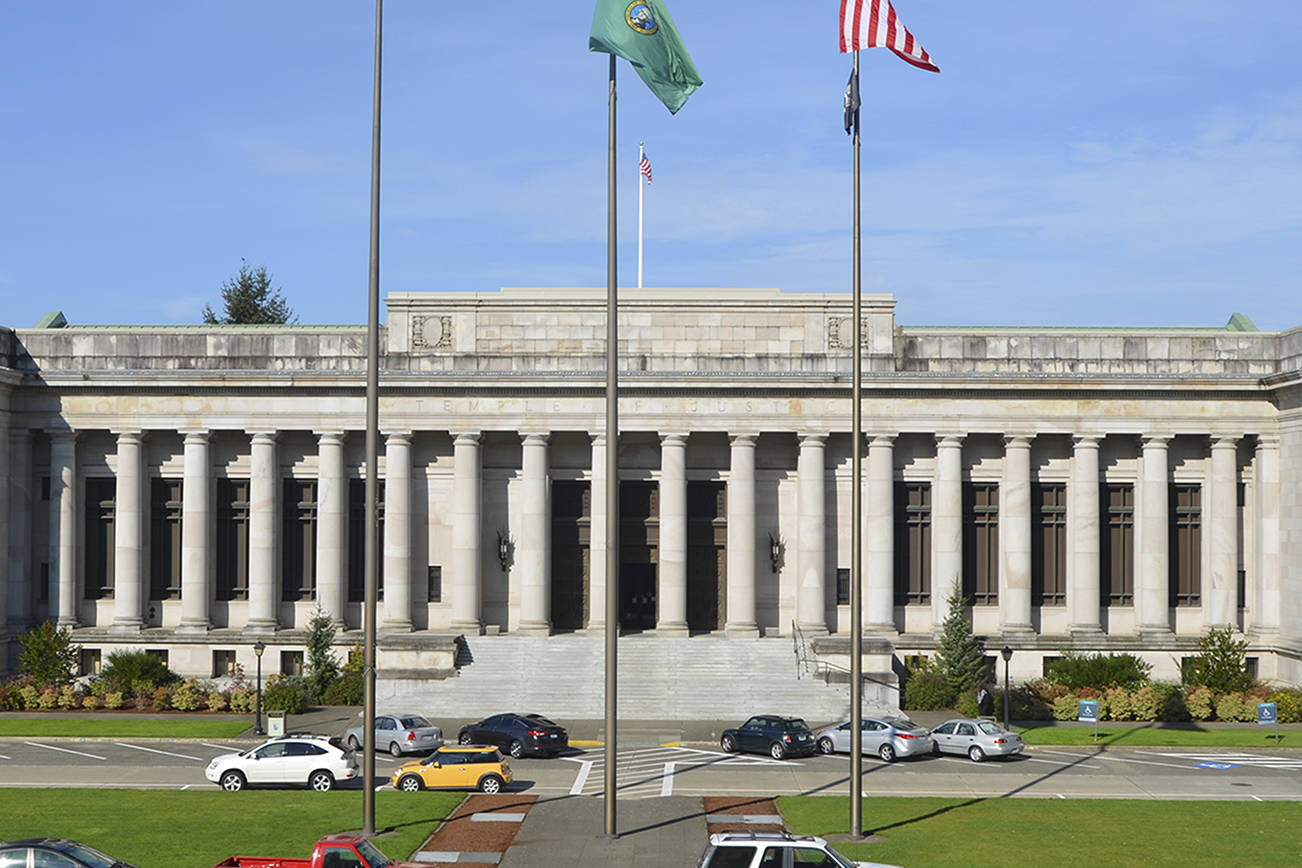A proposed initiative that sought to ban safe drug-consumption sites within King County was struck down by the Washington State Supreme Court on Thursday following nearly two years of opposition to the county’s plan to begin a pilot program.
The court ruled on Dec. 6 that Initiative 27 could not appear before King County voters on a ballot because it infringed on the county’s right to set its own budget. The initiative would have prevented the county from spending money on funding safe-consumption sites and create civil penalties for people who run them, essentially banning the sites in King County. The Supreme Court ruled that by barring the county from using its budgetary powers on only one aspect of a robust plan to curb opioid overdoses, the initiative could be kept from voters. “Because this indicates how and where money is to be spent, I-27’s aim is directly at the budget appropriation. Viewed in context, the ultimate goal of I-27 is to eliminate the funding for (safe consumption) sites,” the decision read.
It was a narrow decision in a years-long struggle between those in favor of the sites and those opposed. The road to Thursday’s decision began in late 2016 when a county task force created by Executive Dow Constantine made a list of recommendations on ways to deal with the opioid epidemic. One was that the county should create a pilot program for safe-consumption sites where people could use drugs while supervised by medical professionals. These sites would ideally also help connect people to services and help move them away from using opioids. It recommended that one site be created in Seattle and another somewhere else in King County.
King County Councilmember Jeanne Kohl-Welles has been heavily involved in pushing for the safe-consumption sites. “The county is able now to go ahead and site safe-consumption sites at one or two, to go forward as a pilot project,” she told Seattle Weekly on Thursday. “This is what the Board of Health approved unanimously two years ago.”
Seattle’s Capitol Hill Community Council has already requested a safe-consumption site or mobile van-based site to be placed in the Capitol Hill neighborhood. The county council passed a resolution last year stating it would not force sites in cities or neighborhoods that did not want them, and several cities in the county passed resolutions barring them within their borders—many of them suburban cities and places where Kohl-Welles said safe-consumption sites would not be as urgently needed. “They would be designed to be located where there is a very high usage of heroin or other opiate drugs,” she said.
In May 2017, an opposition group known as Safe King County was created and headed by former Bothell mayor and then-city councilmember Joshua Freed. It began gathering signatures for I-27 and ended up with more than 69,000, qualifying the initiative for placement on a countywide ballot. Seattle Weekly has attempted to reach Freed for additional comment on Thursday’s ruling. However, the Safe King County Facebook page posted about the decision. “These justices join a majority of the King County Council in an undisguised contempt for the voters who elected them and, if allowed to vote, would prevent illegal heroin injection sites from coming to our state,” the statement read. The post mentioned that Rod Rosenstein, deputy U.S. attorney general, wrote a New York Times opinion saying cities that create safe-consumption sites will face “swift and aggressive action.” “It is revealing [sic] moment in our state’s history that we must rely solely on the federal law enforcement for protection from a tiny elite that seeks to impose a dangerous social experiment on vulnerable communities,” the Safe King County statement continued.
Following I-27’s creation, supporters of the sites filed a lawsuit to block the initiative from reaching the ballot, arguing that the initiative violated the county’s authority to address public-health issues, and in October 2017 a King County Superior Court judge ruled against I-27, keeping it from reaching a February ballot. This was appealed by supporters of the initiative.
The court ruled only on the budget implications of I-27, instead of whether the initiative had the power to affect public-health policy, which was an argument that supporters of the consumption sites have made in the past. Mark Cooke of the ACLU and Protect Public Health, an organization in support of safe-consumption sites, said that “the court doesn’t have to reach all the different legal issues that are raised.”
Thursday’s ruling opens the doors for the county to begin setting up consumption sites as part of its pilot program. It is unknown what Safe King County or other organizations may do next, but Kohl-Welles said she has heard the group may file a statewide citizens’ initiative or push lawmakers in Olympia to introduce legislation prohibiting the consumption sites.
Advocates of such sites point to the safe-consumption facility Insite in the Downtown Eastside neighborhood of Vancouver, B.C., which has run similar programs for years. Health-care providers and researchers previously contacted by the Redmond Reporter, a sister publication of Seattle Weekly, were adamant that such sites provide a public-health benefit to drug users. “There may be arguments against Insite, however, these arguments are not based in medical evidence because, indeed, the scientific evidence is clear,” Dr. M-J Milloy, a research scientist for the B.C. Center on Substance Use, told the Reporter in 2017.
Advocates of safe-consumption sites in King County say they could help reduce the rate of deadly overdoses and of new cases of HIV and other diseases easily transmitted through needle sharing. On top of this, a report released Dec. 5 by the Washington State Department of Health showed that the powerful opioid fentanyl has been causing more deaths in the state. In the first half of 2018, 81 deaths were linked to the opioid, up from 48 during the same period in 2017. Fentanyl can be up to 50 times stronger than heroin, and many users may not know they’re using the drug if it is mixed or substituted for heroin. This should prompt public officials to explore new ways to combat the opioid epidemic, Kohl-Welles said. “Clearly what is happening now is not working, our epidemic is being exasperated,” she said. “We need to get people who have drug issues and abuses and addicted into treatment programs. We can’t just wish that to happen, we have to meet people where they are at.”








